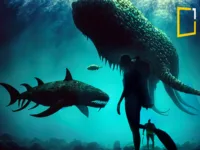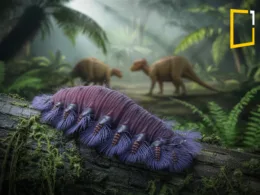Every year, a staggering 8 million metric tons of plastic waste finds its way into our oceans. This massive influx of plastic trash is wreaking havoc on marine ecosystems and endangering countless species. From tiny plankton to giant whales, no marine life is safe from the menace of plastic pollution. To tackle this growing crisis, we need to rethink our approach to plastic packaging and address the sources of nutrient pollution that also contribute to the degradation of our oceans.

Join the movement to protect our oceans
Make a difference with our “Protect Our Oceans” t-shirt. Perfect as a gift for eco-conscious friends and family, or as a treat for yourself. Wear it proudly and be a part of the solution to keep our seas clean and healthy.
👉 Order yours today and take a stand against ocean pollution! https://bit.ly/oceanblueShirt
on Amazon: https://amzn.to/3yn1XRi
The Impact of Plastic Pollution on Our Oceans
Plastic pollution in the ocean is a pressing environmental issue that affects us all. Once in the water, plastic waste doesn’t just disappear. Instead, it breaks down into smaller pieces known as microplastics, which are ingested by marine life, often with fatal consequences. These microplastics can accumulate in the food chain, eventually reaching human consumers. The pervasive nature of plastic pollution highlights the urgent need for sustainable solutions.
One of the most alarming aspects of plastic pollution is how it travels. Ocean currents carry plastic debris across vast distances, creating massive garbage patches in certain areas. The Great Pacific Garbage Patch, for example, is a floating mass of plastic waste larger than Texas. This phenomenon is not just an eyesore; it represents a significant threat to marine life and ocean health.
Marine Life
Marine life is incredibly diverse, ranging from microscopic plankton to the majestic blue whale. These creatures form intricate ecosystems that are vital for maintaining the health of our oceans. However, plastic pollution and nutrient runoff are threatening this delicate balance. Marine animals often mistake plastic debris for food, leading to ingestion and entanglement that can be fatal. Additionally, nutrient pollution fuels algae blooms, which create dead zones devoid of oxygen, making it impossible for marine life to survive. Protecting marine life is not just about preserving biodiversity; it’s about ensuring the stability and health of the entire ocean ecosystem.

🌊 Dive into Adventure with “Save the Ocean” (Save the Earth) Paperback! 🐢
Join Kaleisha, a mermaid, and Agwe, a silly sea turtle, in this award-winning tale that teaches kids the importance of recycling and conservation. With beautiful illustrations and an engaging story, “Save the Ocean” is perfect for World Oceans Day and Earth Day.
👉 Get your copy today and help save the ocean with this heartwarming children’s book! https://amzn.to/3LUA468
Rethinking Plastic Packaging
To effectively combat plastic pollution, we must redesign our entire plastic packaging system. This means moving away from single-use plastics and adopting more sustainable alternatives. Biodegradable and compostable packaging materials offer promising solutions, as they break down more easily in the environment. Additionally, innovations in packaging design can reduce the amount of plastic used without compromising product integrity.
Consumers also play a crucial role in this transformation. By choosing products with minimal or eco-friendly packaging, we can collectively reduce the demand for plastic. Recycling programs and initiatives to promote the reuse of materials are essential components of a sustainable plastic economy. Through concerted efforts at both the industry and individual levels, we can make significant strides in reducing plastic waste.
The Role of Agriculture in Ocean Pollution
While plastic pollution is a significant issue, it is not the only threat to our oceans. Nutrient pollution from industrial and agricultural sources also poses a severe risk. Runoff from fertilizers and pesticides used in agriculture can lead to harmful algae blooms in coastal waters. These blooms deplete oxygen levels, creating “dead zones” where marine life cannot survive.
Dead zones are expanding globally, driven by sustained nutrient pollution. Managing nutrient pollution in agriculture is critical to reversing this trend. Farmers can adopt practices that improve soil health and reduce runoff, such as using organic fertilizers and implementing crop rotation. These methods not only benefit the environment but also enhance agricultural productivity and sustainability.
🎙️ Bring Your Projects to Life with Professional AI Voiceover! 🎧
Looking for high-quality, versatile voice services? Visit our Fiverr gig now for perfect voiceovers for commercials, narrations, and more. Enhance your content with seamless and captivating voiceovers.
👉 Click the link to get started today! https://bit.ly/benvoiceover

Sustainable Farming Practices
Improving soil health through sustainable farming practices is a key strategy in managing nutrient pollution. Organic matter, such as compost, can enhance soil structure, increase water retention, and promote healthy microbial activity. Cover cropping and reduced tillage are additional practices that help prevent soil erosion and nutrient loss.
Transitioning to sustainable farming systems presents challenges, including the need for education and financial support for farmers. However, the long-term benefits of healthier soil, increased biodiversity, and reduced pollution make it a worthwhile investment. Policymakers and agricultural stakeholders must work together to promote and support sustainable practices.
Joining the Movement for Cleaner Oceans
The fight against ocean pollution requires a collective effort. By redesigning our plastic economy and adopting sustainable agricultural practices, we can protect our oceans and ensure a healthier planet for future generations. As individuals, we can make a difference by making informed choices, reducing our plastic consumption, and supporting policies that promote environmental sustainability.

Join the movement to protect our oceans
Make a difference with our “Protect Our Oceans” t-shirt. Perfect as a gift for eco-conscious friends and family, or as a treat for yourself. Wear it proudly and be a part of the solution to keep our seas clean and healthy.
👉 Order yours today and take a stand against ocean pollution! https://bit.ly/oceanblueShirt
on Amazon: https://amzn.to/3yn1XRi
A Call to Action
Join us in the movement to protect our oceans. Share this article to spread awareness about the impact of plastic and nutrient pollution on marine ecosystems. Leave a comment with your thoughts on reducing plastic waste and the importance of sustainable farming. Together, we can make a lasting impact.
—————————————————————
Thanks for joining this wild ride. Stay curious, stay tuned, and let’s make our world brighter!
Subscribe to our channel and stay tuned for more intriguing mysteries and scientific wonders. Together, let’s uncover the secrets of the Earth and expand our understanding of this fascinating world.
Check out the latest blog and video on YouTube and learn something new today.
Attention, all readers! To deepen your understanding and stay informed on the latest news and trends, be sure to click on the link to access more informative articles.
Join the family by liking us on Facebook, or follow us on Twitter and Instagram.
If you liked this story, sign up for the weekly OneMinuteExplore features newsletter called “The Essential List”. A handpicked selection of stories from OneMinute Nature, Wildlife, Culture, Travel, Stories, and more… delivered to your inbox every Weekend.
👉 We may earn a commission from purchases made through links in this content, but it won’t affect your price. Rest assured, our recommendations are based on thorough research and genuine belief in the products. Your support through these links helps us continue providing valuable content. Thank you for your support!












